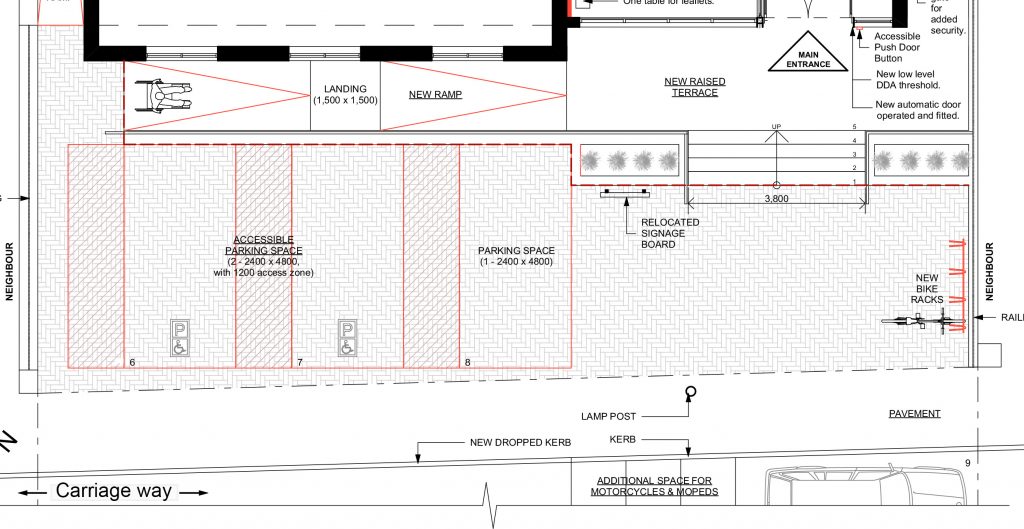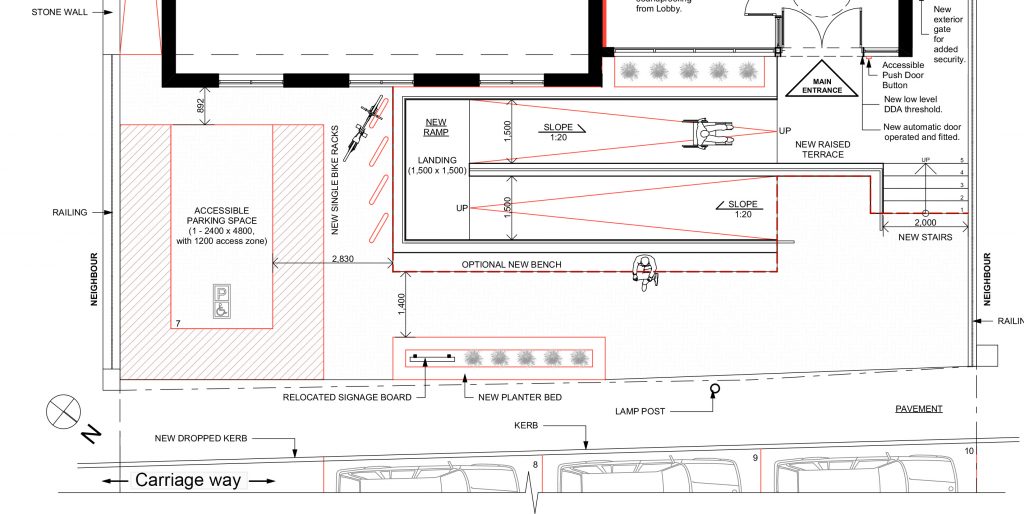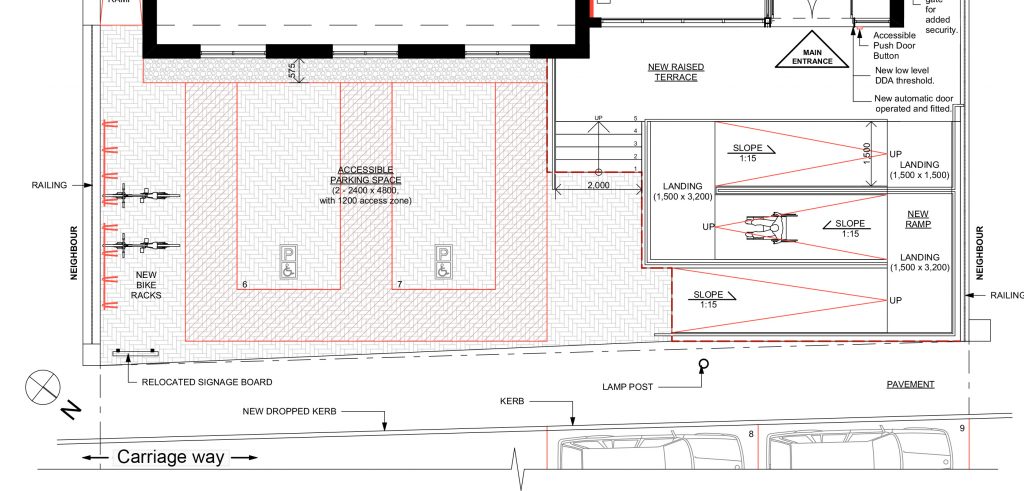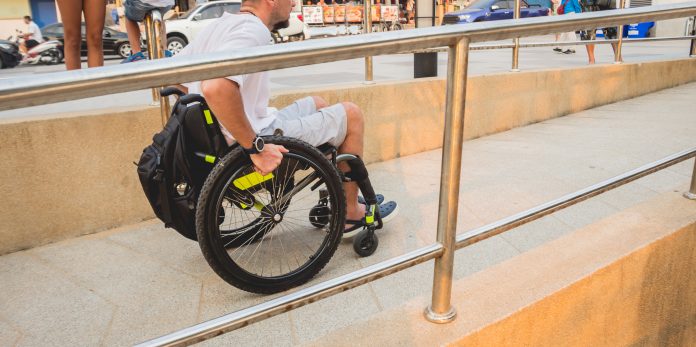Ian Streets, managing director of About Access, explores the importance of ramps when considering accessible design
They may not be the most common aid to accessibility – loos and parking bays can probably contest that status – but ramps are right up there as one of the most important.
If you don’t have one you risk discriminating against people who are unable to use steps. What is not so well known is that there is all sorts of guidance around providing ramps, and if you get it wrong you can end up on a slippery slope.
As part of our programme of virtual training aids we even made a film about ramps. The architects’ drawings we included actually highlighted another matter which really shouldn’t be an issue after all this time – referencing the Disability Discrimination Act rather than the Equality Act 2010 – but we can park that for now.
One, two or three ramps?
Our video training presentation looks at a scenario that presents the options of using one, two or three ramps to help people get where they want to go without having to negotiate the five steps which take people between ground level and a new raised terrace.
Some of the relevant features in the plans are the area between the bottom of the steps and the pavement, the accessible parking bays and the bike racks, all of which vary depending on which option is selected.
Less prominent but essential to consider are the new dropped kerb, which improves accessibility, and the signage board, which is a potential obstacle. These have different locations in each plan.
Key features of the single ramp are a starting point further away from the steps, which are wider than in the other two scenarios. This model also provides three accessible parking bays with access zones. It’s quite a long ramp so there’s a landing halfway along to provide a resting point for people going up, and to help people manage their descent if they’re coming down. The top landing is a good distance from the entrance door of the building, but not too far.

The double ramp starts from a point next to the steps and has a landing at the halfway point which enables users to make the 180-degree turn and continue their journey up or down. This version has only one accessible parking space, and the top landing is right outside the front door of the building, which could result in congestion if people are waiting.

The triple ramp has shorter slopes but a steeper gradient of 1:15 compared to 1:20, with two landings en route for turning and another at the top, which again may be too close to the entrance door. This design allows for two accessible parking bays.

The numbers for length, width and gradient are governed by Approved Document M (ADM) of the Building Regulations, which says that ramp access should be provided for an approach of 1:20 or steeper and makes the point that this is beneficial for wheelchair users and for people pushing prams, pushchairs and bicycles.
It explains that steep gradients create difficulties for some wheelchair users who lack the strength to propel themselves up a slope or have difficulty slowing down or stopping when descending.
ADM also covers the requirement for support on both sides of a ramp, and it rejects any notion that ramps remove the need for steps. Both options should be available because some people who can walk but have restricted mobility find it more difficult to negotiate a ramp than stairs, especially if there is the potential for a slip hazard. ADM also highlights some of the essentials of step design, including warning surfaces at the approach to steps, handrails for support and highlighting nosings. Each of these features – and we haven’t even mentioned lifts – has its own requirements, all of which are detailed in ADM.
Meeting the needs of a wide range of people
The users themselves will vary depending on the environment – is the building a shopping centre, transport interchange, educational establishment, hospital, museum or something else?
So when we audit the ups and downs of a property we don’t just look for opportunities to install ramps as an alternative to steps. We examine how a project can meet the needs of a wide range of people who have different impairments, and we identify those needs by carrying out detailed and varied consultations and by building a bank of knowledge, experience and contacts.














